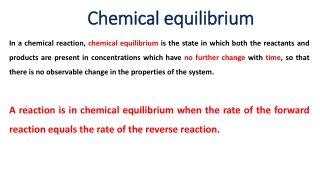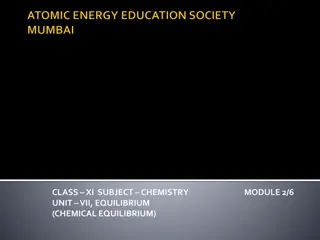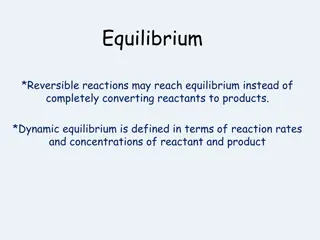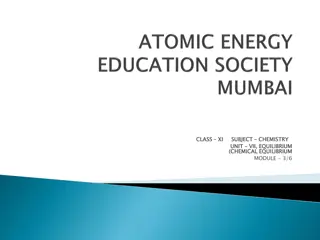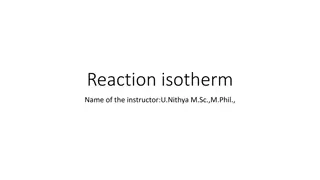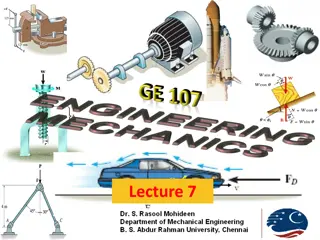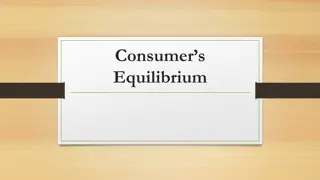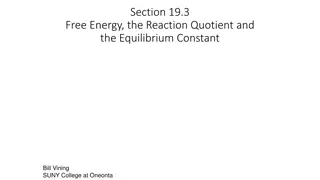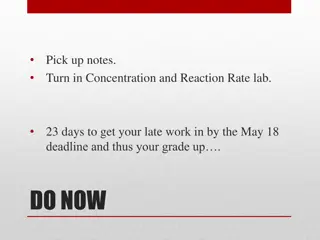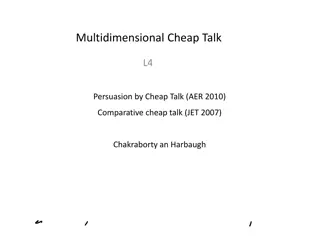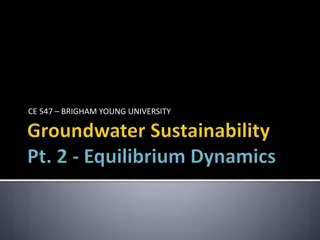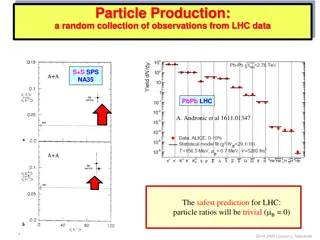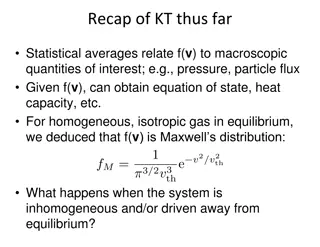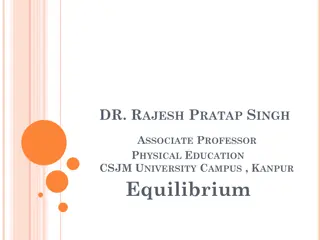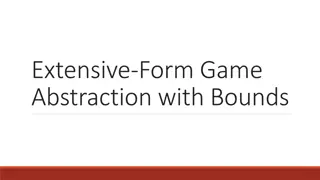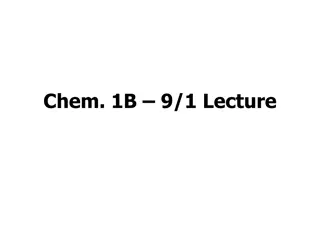
Understanding Moments and Equilibrium in Physics
Explore the concepts of moments and equilibrium, learn how to solve problems involving objects in balance, and grasp the principles of forces and moments in equilibrium using practical examples. Dive into topics like resolving forces, calculating reactions, and maintaining balance in various scenarios.
Uploaded on | 0 Views
Download Presentation

Please find below an Image/Link to download the presentation.
The content on the website is provided AS IS for your information and personal use only. It may not be sold, licensed, or shared on other websites without obtaining consent from the author. If you encounter any issues during the download, it is possible that the publisher has removed the file from their server.
You are allowed to download the files provided on this website for personal or commercial use, subject to the condition that they are used lawfully. All files are the property of their respective owners.
The content on the website is provided AS IS for your information and personal use only. It may not be sold, licensed, or shared on other websites without obtaining consent from the author.
E N D
Presentation Transcript
Moments Equilibrium
Moments: Equilibrium KUS objectives BAT understand moment and solve problems with objects in EQUILIBRIUM using moments and forces Starter: Thought experiment Jonny Wilkinson and his ten year old daughter Freya have put a long plank resting on a upturned bucket so that the centre of the plank is on the bucket. Jonny says you stand at one end and I will sit at the other. Can I lift my feet off the ground and still keep us balanced?
Notes Notation ? Means Resolve the forces acting on an object in the vertical direction ?? ?or M(P) Mean Take moments with pivot at point P Fulcrum is another word for Pivot A rigid body does not bend
WB10a Equilibrium find the sum of the moments about P If an object is in equilibrium, the resultant forces on the object must be zero Also, if an object is in Equilibrium then it will not turn about any point. This means the sum of moments about any point must be zero 3 N 3 N P is called a Pivot 1 m 1 m P 6 N The resultant force is zero ? 3 + 3 6 = 0 N The sum of moments is zero ?? ? 3 2 + 3 0) (6 1 = 0 Nm What happens if we move the pivot?
WB10b Equilibrium What if we move the pivot? ? 3 + 3 6 = 0 N 3 N 3 N 1 m 1 m ?? ? P 6 N 3 1 + 6 0) (3 1 = 0 Nm 3 N 3 N ? 3 + 3 6 = 0 N 1 m 1 m P 6 N ?? ? 3 0 + 6 1) (3 2 = 0 Nm In Equilibrium: The resultant force is ALWAYS zero The sum of moments is ALWAYS zero Make sure you can see why these are true
WB11 Uniform rods A uniform rod AB of length 4 m and mass 5 kg is held up by a pivot at C . Where AC = 1.5 m. a) Calculate the mass of the particle which must be attached at A to maintain equilibrium with the rod horizontal. b) Hence find the reaction force at C RC RC is the reaction force of the Pivot 1.5 m ? The centre of mass of a uniform rod is in its exact middle 2 m 0.5 m ? ? Wrod = 5g Wparticle Wparticle 1.5 + RC 0 = 5g 0.5 Wparticle = ? Taking moments about C: ?? ? ?? ?? RC = Wparticle + Wrod Resolving the forces : ? RC = 5 ?? ?? ? 3? + 5? =
WB12a A uniform beam AB of length 5 m and mass 30 kg rests horizontally on supports at C and D. Where AC = BD = 1 m. A man of mass 75 kg stands on the beam at E where AE = 2 m. Calculate the magnitude of the reaction at each of the supports C and D. RC RD 1 m 1 m 0.5 m 1.5 m ? 1 m ? ? ? ? Wrod Wman We have twounknowns so we want to build two equations. First resolve the forces Secondly, take moments about C, there are three forces other than RC If more is needed we would take moments about D or another point
WB12b RC RD 1 m 1 m 1.5 m 0.5 m 1 m ? ? ? ? ? 30g 75g resolve the forces ? RC + RD = 105 g 75g 1 + 30g 2.5 = RD 3 Take moments about C: ?? ? So RD = 45 g = 441 N Now use the first equation RC + RD = 105 g = 1029 N So RC = 588 N
WB13 A uniform plank AB has mass 40 kg and length 3 m. A load of mass 20 kg is attached to the plank at B. The loaded plank is held in equilibrium, with AB horizontal, by two vertical ropes attached at A and C, as shown in the diagram. The plank is modelled as a uniform rod and the load as a particle. Given that the tension in the rope at C is three times the tension in the rope at A, calculate a) the tension in the rope at C (b) the distance CB. ? + 3? = 40? + 20? ? 4? = 60? ? = 15? N Tension at C = 3? = 45? N 3? ? ?? ? B A C 20? ? + 15? 3 ? = 40? 1.5 ? 3 m x 20?? + 45? 15?? = 60? 40?? 40g 20g 45?? = 15? ? =15? 45?=1 3 m
WB14 A uniform plank AB has mass 40 kg and length 4 m. It is supported in a horizontal position by two smooth pivots, one at the end A, the other at the point C of the plank where AC =3 m, as shown in the diagram. A man of mass 80 kg stands on the plank which remains in equilibrium. The magnitudes of the reactions at the two pivots are each equal to R newtons. By modelling the plank as a rod and the man as a particle, find (a) the value of R (b) the distance of the man from A ? ? C A B 1 m 1 m 2 m ? 2? = 40? + 80? x m ? = 60? N 80g 40g ?? ? 40? 2 + 80? ? = 3? 80? 1 + ? = 180? ? =5 4= 1.25 m
WB15ab A steel girder AB has weight 210 N. It is held in equilibrium in a horizontal position by two vertical cables. One cable is attached to the end A. The other cable is attached to the point C on the girder, where AC= 90 cm, as shown in the figure above. The girder is modelled as a uniform rod, and the cables as light inextensible strings. Given that the tension in the cable at C is twice the tension in the cable at A, find (a) the tension in the cable at A, (b) show that AB= 120 cm. ? 2? ? + 2? = 210 ? 90 cm ? = 70 N C B A If AB = x, ?? ? 210 210 ? 2= 140 90 105? = 12600 ? =12600 105= 120 cm
WB15c A small load of weight W newtons is attached to the girder at B. The load is modelled as a particle. The girder remains in equilibrium in a horizontal position. The tension in the cable at C is now three times the tension in the cable at A. (c) Find the value of W. ? 210 + ? = 4? (1) 3? ? 90 cm ?? ? C B A ? 30 + ? 90 = 210 30 210 W ? + 3? = 210 (2) ????? ?????????????? 1 3 12? = 630 + 3? 2 4 12? = 840 4? 1 2 gives ? = 30 N
KUS objectives BAT understand moment and solve problems with objects in EQUILIBRIUM using moments and forces self-assess One thing learned is One thing to improve is

